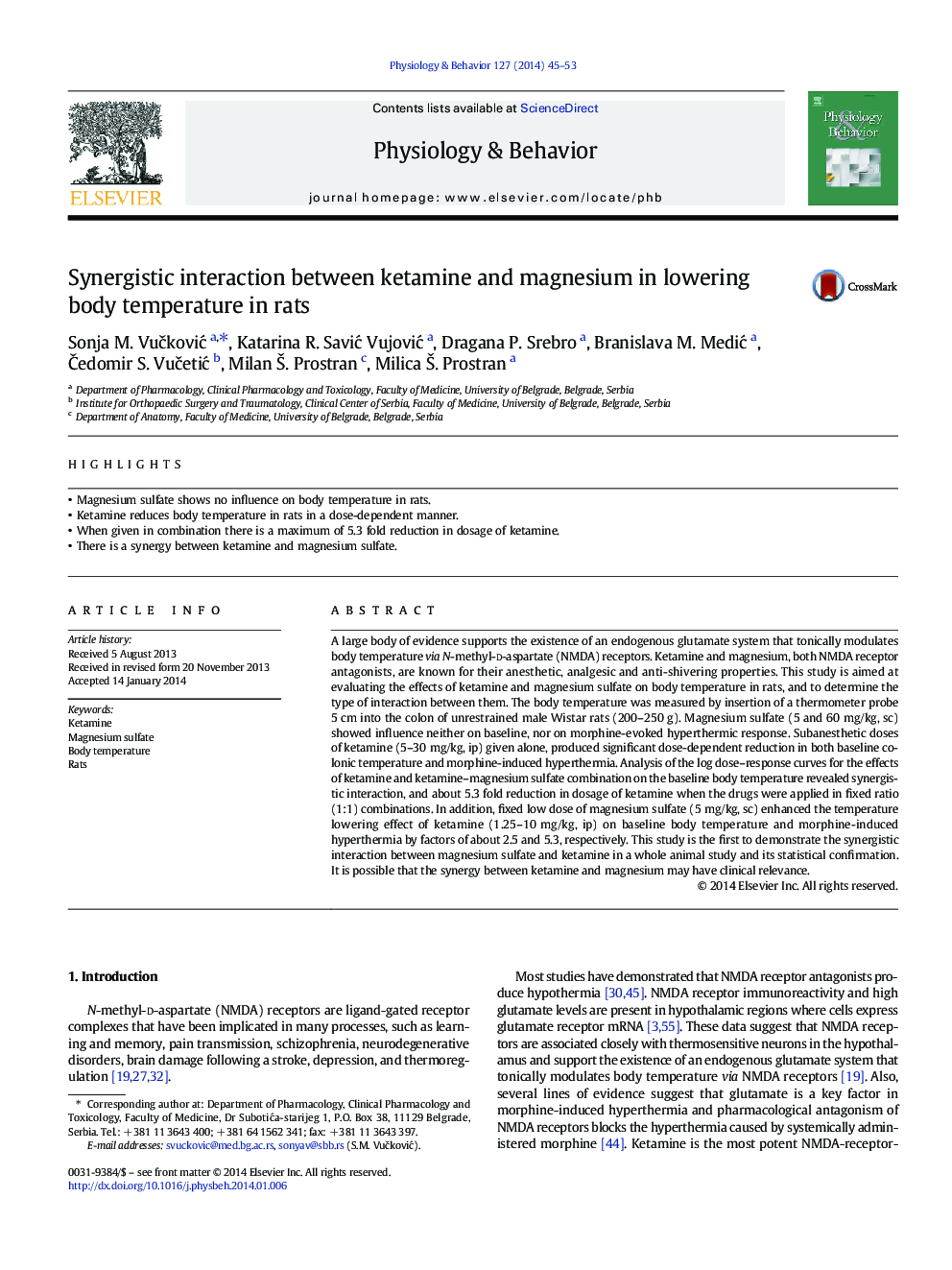| Article ID | Journal | Published Year | Pages | File Type |
|---|---|---|---|---|
| 2844297 | Physiology & Behavior | 2014 | 9 Pages |
Abstract
A large body of evidence supports the existence of an endogenous glutamate system that tonically modulates body temperature via N-methyl-d-aspartate (NMDA) receptors. Ketamine and magnesium, both NMDA receptor antagonists, are known for their anesthetic, analgesic and anti-shivering properties. This study is aimed at evaluating the effects of ketamine and magnesium sulfate on body temperature in rats, and to determine the type of interaction between them. The body temperature was measured by insertion of a thermometer probe 5Â cm into the colon of unrestrained male Wistar rats (200-250Â g). Magnesium sulfate (5 and 60Â mg/kg, sc) showed influence neither on baseline, nor on morphine-evoked hyperthermic response. Subanesthetic doses of ketamine (5-30Â mg/kg, ip) given alone, produced significant dose-dependent reduction in both baseline colonic temperature and morphine-induced hyperthermia. Analysis of the log dose-response curves for the effects of ketamine and ketamine-magnesium sulfate combination on the baseline body temperature revealed synergistic interaction, and about 5.3 fold reduction in dosage of ketamine when the drugs were applied in fixed ratio (1:1) combinations. In addition, fixed low dose of magnesium sulfate (5Â mg/kg, sc) enhanced the temperature lowering effect of ketamine (1.25-10Â mg/kg, ip) on baseline body temperature and morphine-induced hyperthermia by factors of about 2.5 and 5.3, respectively. This study is the first to demonstrate the synergistic interaction between magnesium sulfate and ketamine in a whole animal study and its statistical confirmation. It is possible that the synergy between ketamine and magnesium may have clinical relevance.
Related Topics
Life Sciences
Biochemistry, Genetics and Molecular Biology
Physiology
Authors
Sonja M. VuÄkoviÄ, Katarina R. SaviÄ VujoviÄ, Dragana P. Srebro, Branislava M. MediÄ, Äedomir S. VuÄetiÄ, Milan Å . Prostran, Milica Å . Prostran,
